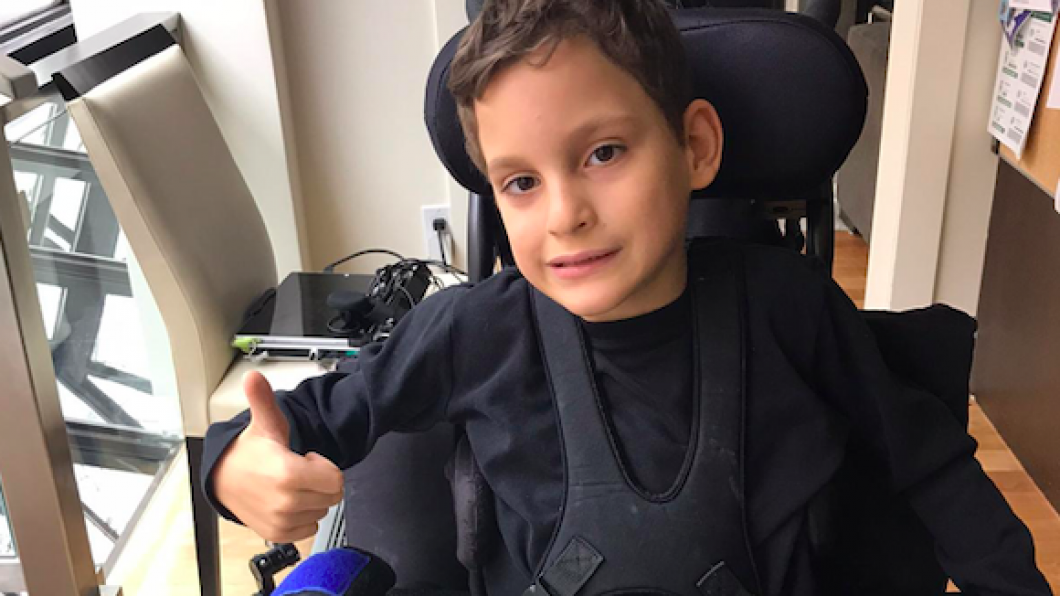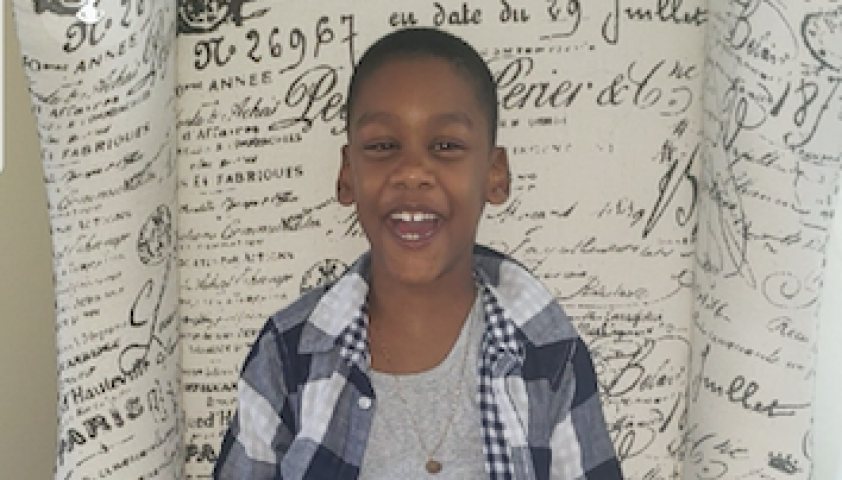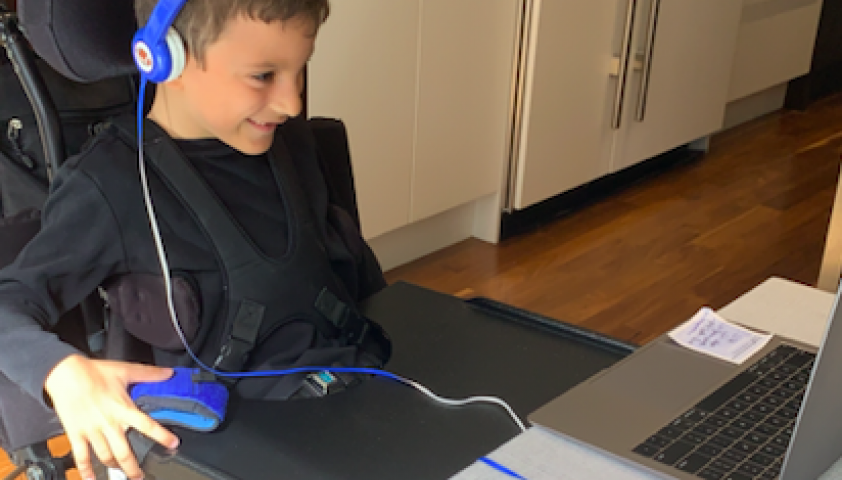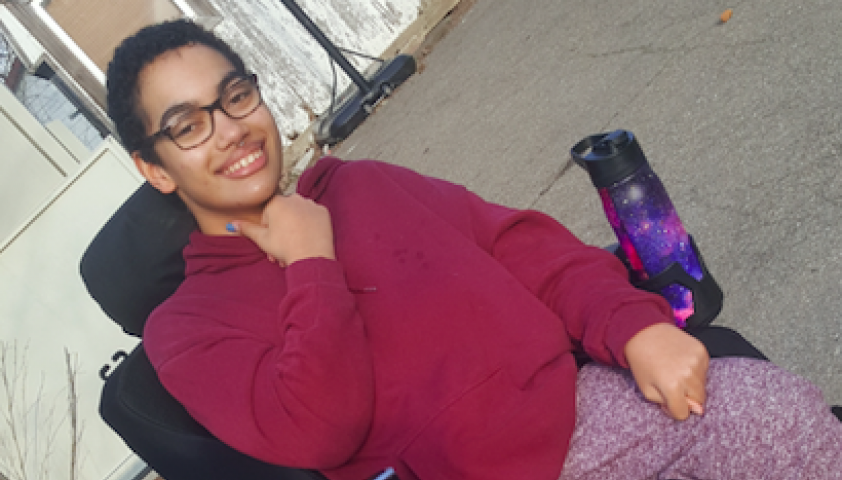
The silver linings amidst the uncertainty
It’s been almost two months since COVID-19 was declared a global pandemic, and in those two months many families have had their lives flipped completely upside down.
Gone are the days of school bus rides and office routines. Hugs and handshakes are but a distant memory. Instead, the “new normal” consists of social distancing, wearing a mask, and living a predominantly “virtual” reality.
And for some families, including those with kids with cerebral palsy, additional challenges include having to manage online classes and handling numerous feelings of anxiety and loneliness in isolation.

At Home with Carson
During the days of social distancing and isolation, seven-year-old Carson’s morning routines have changed from singing his “Good Morning” song in class to at home.
“Thanks to COVID-19, Carson has been a bit restless and bored,” says his mother Cathyanne.
And while Carson seems to enjoy having lots of family time, especially the extra cuddles he gets when he wakes up, participating in school from home has been one of the harder challenges.
While Cathyanne tries to conduct lesson plans from home, she admits Carson only focuses for 15 to 20 minutes at a time, preferring to use is iPad to play games or sing.
“Sometimes I try to include some physical and occupational therapy with him,” she says.
Carson was born with periventricular leukomalacia: a brain injury where small areas of brain tissues die. This in turn lead to a diagnosis of cerebral palsy that affects his gross and fine motor skills, which means he often uses different equipment on a daily basis to get around.
“The challenge I’ve faced is trying to be a teacher, therapist, friend, and parent at the same time.”
And when Cathyanne isn’t focused on getting Carson through a lesson, she often takes him on a nature walk where they talk about the different things that we see like cars, buses, and pets.
But while it’s a nice break from social isolation, Cathyanne admits Carson still has days when he’ll ask when he can go back on the bus and see his friends, referring to all of them by name.

At Home with Gabriel
If you ask Gabriel how he feels during COVID-19, he responds with, “Good but not good.”
For the seven-year-old, one of the things he misses most is getting to go to school and seeing his friends.
“One of the biggest challenges is doing all his school work online,” says his mother, Fabiana.
Gabriel, who was born pre-term at 26 weeks was diagnosed at 18 months with cerebral palsy, affecting all four of his limbs. He uses eye gaze as a way to communicate, and his mother admits there have been a few hiccups while trying to organize an at-home schedule with his schoolwork.
“Gabriel guides me on navigating the eye gaze. It was a steep learning curve managing these online drives with his eye gaze,” she says.
“But staff on Holland Bloorview’s communication and writing aids service team have been the greatest support. They’ve been patient and understanding the technological challenges I have.”
While occasional phone calls and online games with friends and conversations with his grandparents on WhatsApp have been helping Gabriel cope, he also spends most of his time watching his favourite shows, like Nailed It! on Netflix.
As a foodie himself, it’s no surprise that when he’s not watching cooking or baking competition shows he’s helping in the kitchen and watching his parents cook.
The family also enjoys some social distancing outside by taking bike rides, dad on the bike and Gabriel in a Chariot, a stroller-like sidecar, attached to the bike.
It’s a nice and refreshing distraction during the days he feels antsy but, Fabiana says, Gabriel still can’t help but ask often, “Is the pandemic going to be forever?”

At Home with Jadine
For many students the first year of university promises new classes, experiences, and campus buildings to navigate.
What Jadine didn’t plan on navigating was leaving school early and celebrating her 20th birthday at home thanks to a global pandemic.
“I was diagnosed with major depressive disorder and generalized anxiety disorder about three-and-a-half years ago and, as a result of this, I don’t react well to things that I have no control over,” she says.
“Needless to say, because of COVID-19, I've been feeling really depressed which causes my chronic pain to flare up, so I’m drained from not being able to be around the people I love as much.”
Jadine, who has cerebral palsy and uses a mobility device, also admits the pandemic has impacted the in-home care she’s been receiving.
“The time that I have with my personal support workers every day has been cut short, so getting all of my care done within a limited amount of time has been really difficult and stressful to accomplish.”
In order to find some silver linings in the midst of social distancing, Jadine has taken the time to virtually keep in touch with people in her life. She also plans to create a YouTube channel to keep her focused during COVID-19.
“I really want to find a way to communicate with people during this time and spread awareness for important topics such as: disability/ability, sexuality, and race,” she says. “I think it’s a great time and way to reach people because we’re all in our houses and spending a lot more time using the internet.”
On top of finding a new creative outlet, Jadine acknowledges that music, Netflix, her mom and siblings, and video-chatting with family and friends have helped her cope with isolation.
“Finding coping mechanisms and things that bring you joy during difficult times can be hard to do,” she says. “But once you do end up finding things that give you peace through the storm hold onto them tightly because you never know when you might need them.”